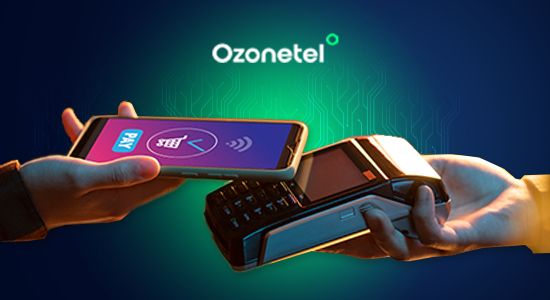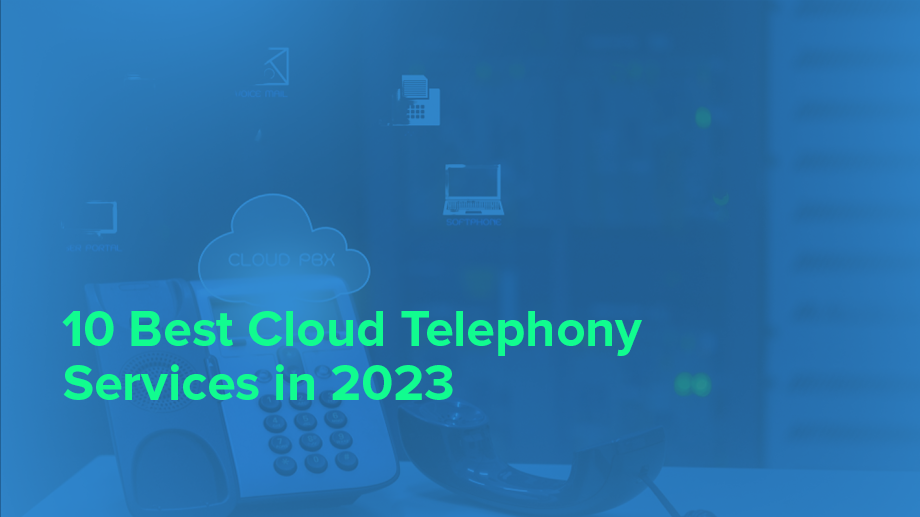- Resources
- Voicebot vs. Chatbot: Key Differences & How to Choose the Right Solution
Voicebot vs. Chatbot: Key Differences & How to Choose the Right Solution

When deciding between a voice bot and a chatbot, it might seem like you’re choosing between two similar options—both powered by AI—but they serve distinct roles. One is designed for spoken communication, while the other excels at handling text.
Understanding these differences is crucial for your business, whether you’re aiming to improve customer service, streamline operations, or enhance user engagement. Let’s break down what each one brings and help you determine which suits your needs best.
What Is Customer Obsession?
Customer obsession is about placing your customers at the core of every decision you make. It goes beyond simply satisfying their needs—it’s about actively working to improve their experience at every touchpoint, anticipating what they want, and addressing their concerns before they even raise them.
What is a Chatbot, and How Does it Work?
A chatbot is a software application designed to simulate conversations with users. It can interact through text-based messages on websites, apps, or platforms like Facebook Messenger. Chatbots are powered by artificial intelligence (AI), which enables them to understand and respond to user inputs in a natural way.
There are two main types of chatbots:
- Rule-based chatbots: These follow predefined scripts and can only respond to specific commands. They work well for answering basic questions, like store hours or order status.
- AI-powered chatbots: These use machine learning to understand context and provide more personalized responses. They learn from each interaction, becoming better over time at handling complex requests.
Chatbots can handle various tasks, from customer service and lead generation to making reservations or processing payments. They connect to databases and systems to retrieve information in real-time, allowing them to provide accurate responses quickly.
Pros and Cons of Chatbot
Chatbots can provide significant value to businesses and users. However, like any technology, they come with their strengths and weaknesses. Below, we break down the key pros and cons of using chatbots.
Pros of Chatbots
- 24/7 Availability: Chatbots are always available, allowing customers to get assistance or answers anytime without waiting for business hours. This increases convenience for users.
- Instant Responses: With chatbots, you get immediate replies. There’s no delay, making it faster for users to get the information or help they need, improving customer experience.
- Cost-Effective: Chatbots can handle large volumes of interactions simultaneously, reducing the need for a large customer support team. This can save money in the long run, especially for routine inquiries.
- Consistency in Answers: Since chatbots operate based on pre-set data, they provide consistent responses. They don’t suffer from human errors or mood fluctuations, which ensures reliability.
- Automates Repetitive Tasks: Chatbots are ideal for handling repetitive queries, freeing up human agents to focus on more complex issues. They can also streamline processes like booking appointments or gathering basic information.
Cons of Chatbots
- Limited Understanding: Although chatbots can handle basic queries well, they may struggle with complex or ambiguous questions. Their responses can seem robotic and might not fully address a user’s needs.
- Lack of Emotional Intelligence: Chatbots are not capable of recognizing or understanding emotions. They may come across as cold or impersonal, especially in sensitive situations that require empathy.
- Dependency on Pre-set Data: Chatbots rely heavily on pre-programmed information and rules. If a user’s query falls outside the bot’s database or script, it may not be able to help.
- Frustrating User Experience in Some Cases: A chatbot that doesn’t understand a user’s request or gives irrelevant answers can lead to frustration. Users may feel the need to escalate the issue to a human agent.
- Maintenance Required: Chatbots must be updated regularly with new information and scripts to remain effective. Without proper maintenance, their performance can degrade, leading to outdated or inaccurate responses.
Pros and Cons of Voice Bot
Voice bots offer a unique way to interact with users through voice commands. They bring several benefits but also present challenges. Here’s a breakdown of the key pros and cons.
Pros of Voice Bots
- Hands-Free Interaction: Voice bots enable users to perform tasks or get information without needing to type, making it easier to interact while multitasking or when typing isn’t possible.
- Natural User Experience: Voice communication feels more natural than typing for many users. Voice bots are designed to mimic human conversations, which can make interactions smoother and more engaging.
- Faster Responses: Voice bots can provide quicker responses than text-based systems since speaking is often faster than typing. This reduces wait times and improves efficiency for users.
- Improves Accessibility: Voice bots are beneficial for users with disabilities or those who find it difficult to use traditional interfaces. They help make services more accessible to a wider audience.
- Multilingual Capabilities: Many voice bots are equipped with multi-language support, allowing them to communicate with a global audience without requiring separate systems or human agents.
Cons of Voice Bots
- Misunderstanding Accents and Speech: Voice bots may struggle to accurately interpret various accents or speech patterns. This can result in frustrating interactions, especially for users with strong regional accents.
- Limited Context Understanding: While voice bots can handle basic queries, they may lack the ability to understand the context of complex requests fully. This can lead to misinterpretations or incomplete answers.
- Privacy Concerns: Since voice bots often involve voice recognition, data security and privacy concerns can arise. Users may hesitate to use voice bots if they are unsure how their data is being handled.
- Dependence on Clear Speech: Voice bots require users to speak clearly for optimal performance. If a user mumbles or speaks too quickly, the voice bot may not understand the input correctly, leading to errors or frustration.
- Expensive Setup and Maintenance: Developing and maintaining a high-quality voice bot can be costly. Advanced voice recognition and natural language processing (NLP) systems require continuous updates and improvements.
Voice Bot Vs. Chatbot
Voice bots and chatbots are powerful tools for businesses but serve different purposes. Choosing the right one depends on your specific needs, how you want to communicate with your customers, and the type of interactions you want to automate. Below is a comparison to help you understand the key differences between the two.
| Feature | Voice Bot | Chatbot |
|---|---|---|
| Mode of Communication | Voice-based (spoken interaction) | Text-based (written interaction) |
| Use Cases | Customer support, virtual assistants, order taking | FAQs, lead generation, website support |
| Customer Experience | More natural and human-like conversations | Ideal for quick, simple inquiries |
| Integration | Works with voice-enabled devices (smart speakers, phones) | Works within websites, apps, or social media |
| Technology | Uses Automatic Speech Recognition (ASR) and Text-to-Speech (TTS) | Relies on Natural Language Processing (NLP) |
| Accessibility | Ideal for hands-free or on-the-go interactions | Best for written text responses |
| Complexity Handling | Can struggle with understanding complex or long queries | Handles structured queries and FAQs well |
| User Engagement | Can be more engaging with tone and emotion | Provides quick responses but lacks an emotional tone |
| Implementation | Requires integration with voice assistants (Siri, Alexa) | Can be integrated easily with websites and apps |
Essentially, choosing between a voice bot and a chatbot depends on the nature of the customer interactions you handle. A voice bot could be the right choice if your business requires direct, voice-based communication. For more straightforward, text-based interactions, a chatbot would serve your needs better.
How to Choose the Right Solution for Your Needs?
Selecting the right solution, whether it’s a Voicebot or chatbot, depends on several factors specific to your business or personal needs. Here’s a simple guide to help you make the right choice:
Understand the Purpose
- Voicebot: If you aim to offer hands-free interaction or improve accessibility, a Voicebot may be the better option. It’s great for situations where customers prefer talking over typing, such as customer service hotlines or virtual assistants.
- Chatbot: If your focus is on providing quick, text-based interactions, such as answering frequently asked questions or processing simple requests on a website, a chatbot could be more effective.
Consider the User Experience
- Voicebot: Ideal for users who want a more natural conversation or need help while performing tasks that require their hands, like driving or cooking.
- Chatbot: Better suited for environments where users are likely to be typing, like on websites, apps, or during online shopping.
Assess Complexity
- Voicebot: More complex to set up and maintain because it requires speech recognition and natural language processing (NLP) technology, which can be costlier and require ongoing training.
- Chatbot: Simpler and more cost-effective to implement, especially if you’re looking for a text-based interface that handles common queries or interactions.
Evaluate Your Budget
- Voicebot: Requires higher upfront costs for speech recognition software, integration, and continuous training. If you have the budget for advanced technology, it could offer a higher level of engagement.
- Chatbot: Less expensive and quicker to implement. A chatbot is often the better choice if you’re on a tighter budget or need a quick solution.
Consider Your Audience
- Voicebot: Ideal for audiences who are comfortable with voice commands or for situations where typing isn’t practical. This is especially useful for mobile users, elderly people, or those with disabilities.
- Chatbot: Works well for audiences who are accustomed to text-based communication and when privacy is a concern, as users may prefer typing over speaking.
Look at Integration Needs
- Voicebot: Can be integrated with voice assistants like Siri, Alexa, or Google Assistant. If you need to integrate with existing systems that support voice commands or speech recognition, a Voicebot might be necessary.
- Chatbot: Easier to integrate into websites, social media platforms, and messaging apps like Facebook Messenger or WhatsApp.
Analyze the Data and Feedback
- Voicebot: Can provide a deeper level of insight into user behavior and preferences, especially in real-time conversations.
- Chatbot: Provides valuable data as well but often relies more on pre-programmed interactions. Chatbots might offer easier tracking if detailed user interaction analytics are a priority.
How Voicebot and Chatbot Can Be Used Together to Improve CX
Integrating both Voicebots and chatbots into your customer experience (CX) strategy can deliver a seamless and effective service. While each solution has its strengths, using them together allows you to tap into the unique benefits of both, enhancing customer satisfaction. Here’s how combining them can improve CX:
Create Seamless Transitions Between Voice and Text
If a Voicebot cannot fully resolve a query, it can seamlessly transfer the interaction to a chatbot for further support. For instance, after providing initial information via voice, the Voicebot could prompt the user to continue the conversation through text for more detailed instructions or forms.
Similarly, if a customer starts with a chatbot but needs more detailed verbal assistance (e.g., for complex transactions), the chatbot can direct them to a Voicebot for a more interactive conversation.
Provide Multi Channel Support
Customers often prefer different communication channels depending on their situation. Some may prefer speaking to a Voicebot when on the move, while others may feel more comfortable typing a query in a chatbot while working at their desk.
By using both tools together, you can meet customers where they are, providing flexibility and choice without losing the ability to deliver efficient responses.
Reduce Wait Times and Improve Response Accuracy
Voicebots are perfect for handling urgent, basic inquiries or tasks quickly. Once the conversation becomes more complex, a chatbot can handle multi-step interactions or provide a text-based solution that might be harder to explain verbally.
This allows for more accurate information delivery and faster resolution, avoiding long hold times or customer frustration from waiting for a human agent.
Improve Personalization
Using both bots together lets you gather more comprehensive data about your customers’ needs and preferences. A Voicebot can capture details about how a customer prefers to interact (via voice or text), while a chatbot can record information about their browsing behavior or previous requests.
This combined data helps create a more personalized experience, offering tailored recommendations, follow-ups, or promotions across both channels.
Handle High Volumes Efficiently
During peak hours, Voicebots can handle multiple simultaneous calls, while chatbots can manage many text-based interactions on your website or app. This helps your business handle a high volume of inquiries without overloading customer service agents.
Unified Customer Support System
Using both systems together creates a consistent support system across channels. Whether a customer is speaking or typing, they’ll experience a consistent flow and quality of service, improving overall satisfaction.
Conclusion
Both Voicebots and chatbots offer unique advantages—Voicebots enable hands-free, real-time interactions and chatbots handle text-based, complex queries—using them together can maximize your customer service efficiency and improve customer experience (CX).
Whatever your business needs may be, Ozonetel offers tailored solutions to meet them. Whether you need Voicebots or chatbots powered by ChatGPT for automating repetitive tasks, providing personalized responses, or integrating seamlessly with your existing systems, Ozonetel has you covered.
With solutions trusted by over 2500 businesses like Uber, WeWork, and Lazada, Ozonetel helps you optimize customer conversations at scale and improve both customer satisfaction (CSAT) and operational efficiency.
Request a demo to explore how we can support your business with advanced conversational AI solutions.
Find the Right AI Solution for Your Business
Frequently Asked Questions
The choice between a Voicebot and a chatbot depends on your business needs. Voicebots are ideal for tasks requiring verbal interaction, like customer support or ordering systems, whereas chatbots excel in text-based communication, such as handling FAQs or basic inquiries.
If your business deals with frequent phone calls, Voicebots are more effective for providing real-time assistance. Chatbots, on the other hand, work better for online platforms where text-based communication is preferred.
Both chatbots and Voicebots have limitations, such as handling complex inquiries or understanding accents and context. They can struggle with ambiguous questions or issues requiring human empathy, though improvements in AI are reducing these gaps.







